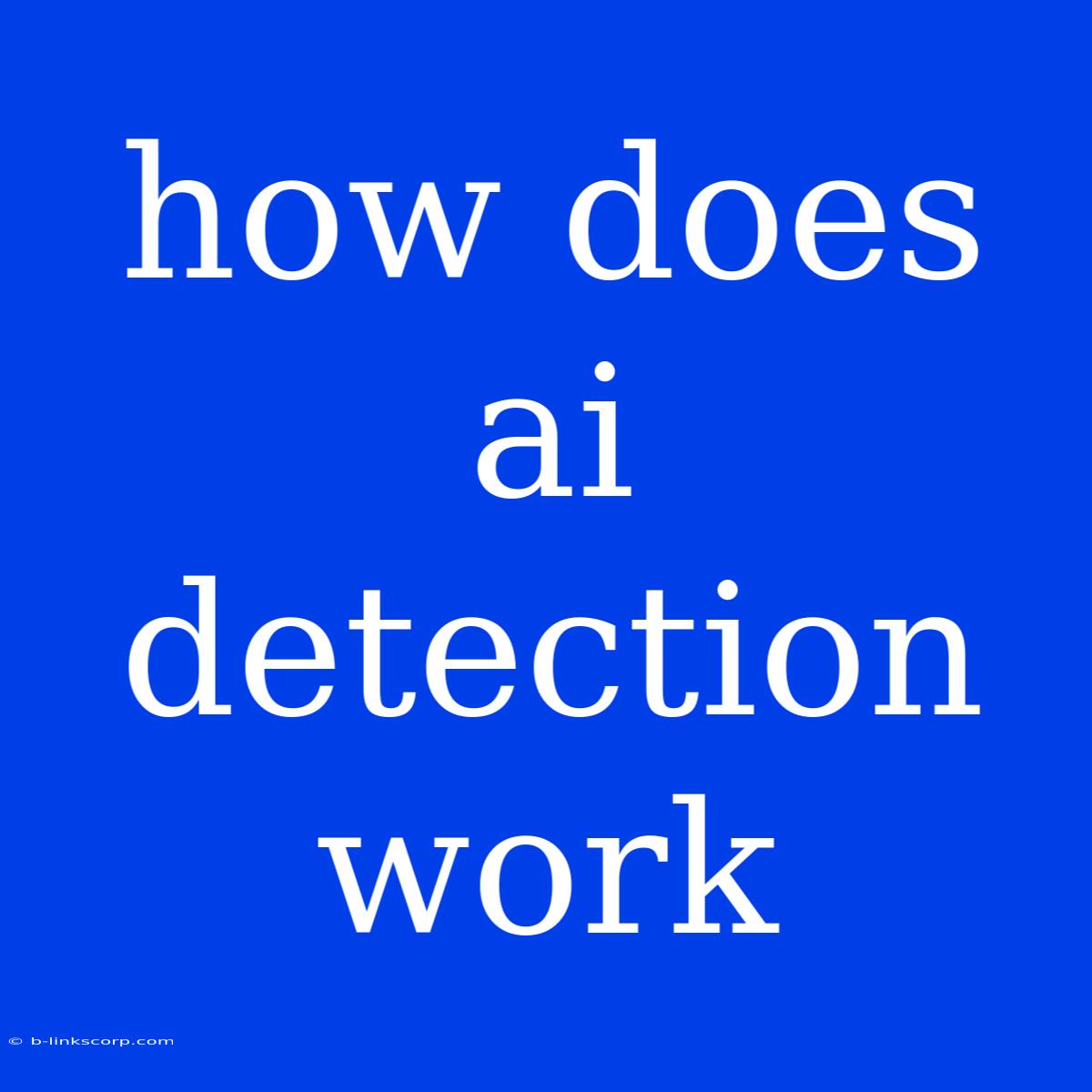How Does AI Detection Work?
The world of artificial intelligence (AI) is rapidly evolving, with applications ranging from self-driving cars to personalized medicine. However, with this advancement comes a concern: the potential for AI to be misused. To combat this, AI detection technologies are emerging to identify and mitigate the risks associated with malicious AI.
Understanding AI Detection
AI detection involves using algorithms to distinguish between human-generated content and content created by AI systems. It works by analyzing various aspects of the data, including:
1. Statistical Analysis:
- Text Analysis: AI-generated text often exhibits patterns and characteristics that differ from human-written text. These patterns can include word choice, sentence structure, and overall writing style.
- Image Analysis: AI-generated images may have unique characteristics like pixel patterns or artifacts that distinguish them from human-created images.
2. Content Analysis:
- Logical Inconsistencies: AI models may struggle with complex logic and reasoning, leading to inconsistencies or illogical statements in their output.
- Lack of Creativity: AI models are trained on existing data, limiting their ability to generate truly original and creative content.
3. Behavioral Analysis:
- Unusual Interaction Patterns: AI models might engage in unusual or repetitive communication patterns that deviate from human behavior.
- Lack of Emotional Intelligence: AI models are typically lacking in emotional intelligence and struggle to understand and respond to nuanced human emotions.
Techniques Used in AI Detection:
1. Machine Learning:
- Supervised Learning: Training models on labeled datasets of human and AI-generated content to learn patterns and classify new data.
- Unsupervised Learning: Analyzing data for patterns and anomalies without predefined labels, allowing for the detection of previously unseen AI techniques.
2. Deep Learning:
- Convolutional Neural Networks (CNNs): Used for image analysis, detecting subtle patterns and artifacts in AI-generated images.
- Recurrent Neural Networks (RNNs): Employed for text analysis, identifying patterns in word order and sentence structure.
3. Watermarking:
- Embedding Identifiable Patterns: Adding invisible signatures or watermarks to AI-generated content to track its origin and ensure authenticity.
Applications of AI Detection:
- Content Moderation: Identifying and removing AI-generated content that violates platform policies or spreads misinformation.
- Academic Integrity: Detecting AI-generated essays or research papers submitted by students.
- Fraud Detection: Identifying fake online profiles or synthetic data used for fraudulent activities.
- Security: Protecting against AI-powered attacks and ensuring the reliability of AI-driven systems.
Limitations of AI Detection:
While AI detection technologies are improving, they face several challenges:
- Evolving AI Techniques: AI models are constantly being updated and refined, making it challenging for detection systems to keep up.
- Sophisticated AI Models: Advanced AI models are becoming increasingly difficult to distinguish from human-generated content.
- Data Bias: Training data used for AI detection may be biased, leading to inaccurate results.
The Future of AI Detection:
As AI technology continues to evolve, so will the techniques used for AI detection. Researchers are exploring novel approaches, such as:
- Hybrid Systems: Combining multiple AI detection techniques for enhanced accuracy.
- Collaborative Detection: Sharing data and expertise between different AI detection systems to improve overall effectiveness.
- Ethical Considerations: Developing AI detection systems that are fair, transparent, and protect privacy.
AI detection plays a crucial role in safeguarding the future of AI by ensuring its responsible and ethical development. As technology advances, we can expect to see more sophisticated and effective AI detection systems emerging, protecting us from potential risks and maximizing the benefits of this powerful technology.

